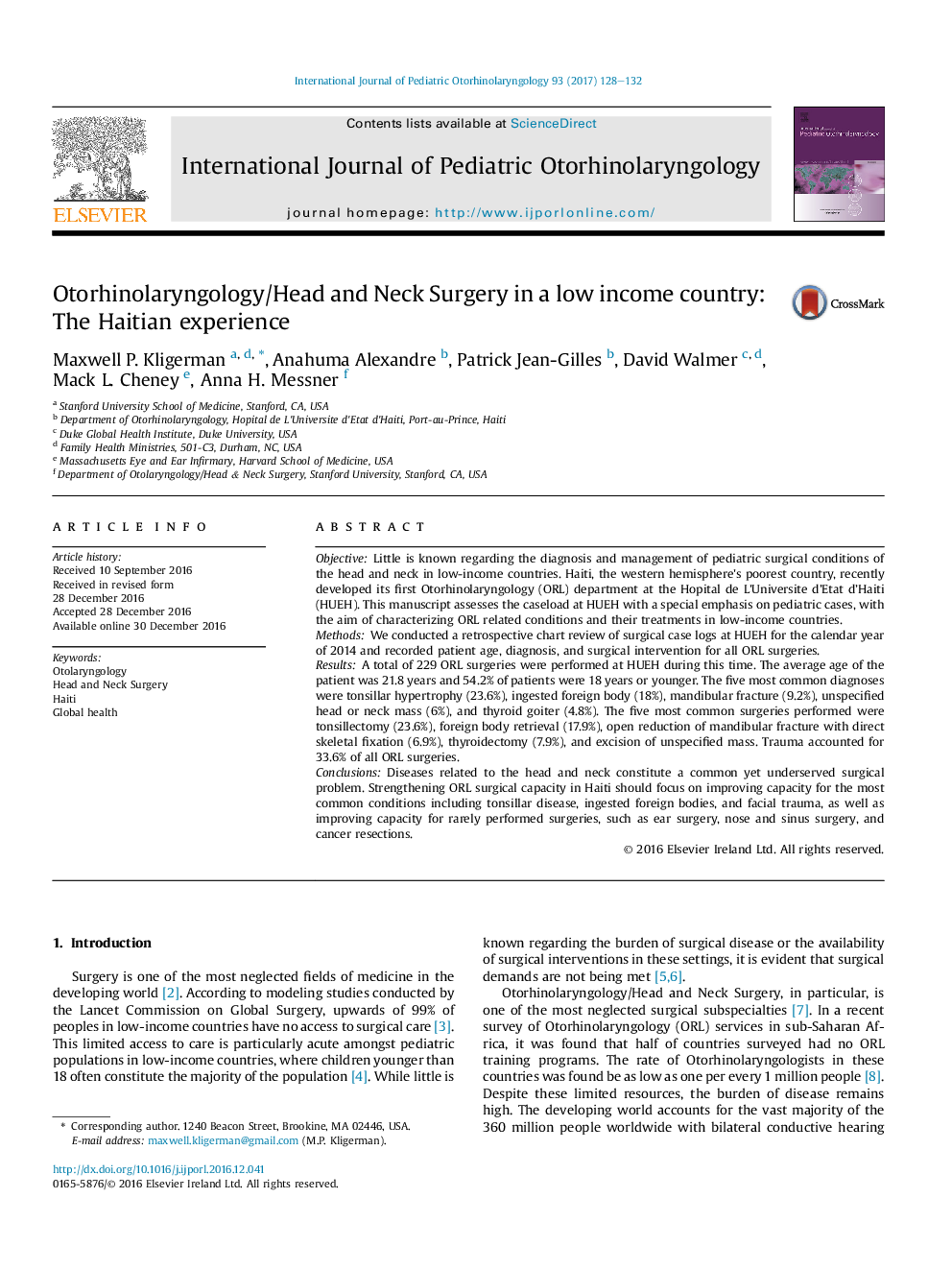| Article ID | Journal | Published Year | Pages | File Type |
|---|---|---|---|---|
| 5714698 | International Journal of Pediatric Otorhinolaryngology | 2017 | 5 Pages |
ObjectiveLittle is known regarding the diagnosis and management of pediatric surgical conditions of the head and neck in low-income countries. Haiti, the western hemisphere's poorest country, recently developed its first Otorhinolaryngology (ORL) department at the Hopital de L'Universite d'Etat d'Haiti (HUEH). This manuscript assesses the caseload at HUEH with a special emphasis on pediatric cases, with the aim of characterizing ORL related conditions and their treatments in low-income countries.MethodsWe conducted a retrospective chart review of surgical case logs at HUEH for the calendar year of 2014 and recorded patient age, diagnosis, and surgical intervention for all ORL surgeries.ResultsA total of 229 ORL surgeries were performed at HUEH during this time. The average age of the patient was 21.8 years and 54.2% of patients were 18 years or younger. The five most common diagnoses were tonsillar hypertrophy (23.6%), ingested foreign body (18%), mandibular fracture (9.2%), unspecified head or neck mass (6%), and thyroid goiter (4.8%). The five most common surgeries performed were tonsillectomy (23.6%), foreign body retrieval (17.9%), open reduction of mandibular fracture with direct skeletal fixation (6.9%), thyroidectomy (7.9%), and excision of unspecified mass. Trauma accounted for 33.6% of all ORL surgeries.ConclusionsDiseases related to the head and neck constitute a common yet underserved surgical problem. Strengthening ORL surgical capacity in Haiti should focus on improving capacity for the most common conditions including tonsillar disease, ingested foreign bodies, and facial trauma, as well as improving capacity for rarely performed surgeries, such as ear surgery, nose and sinus surgery, and cancer resections.
